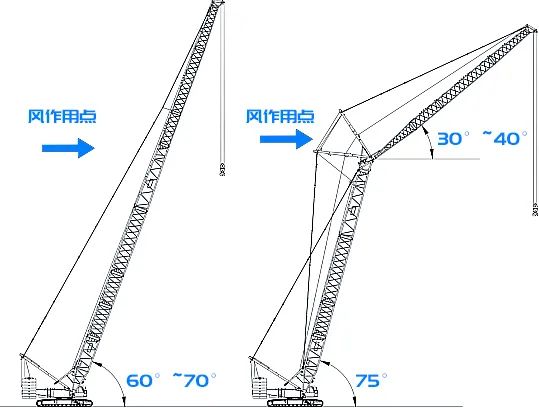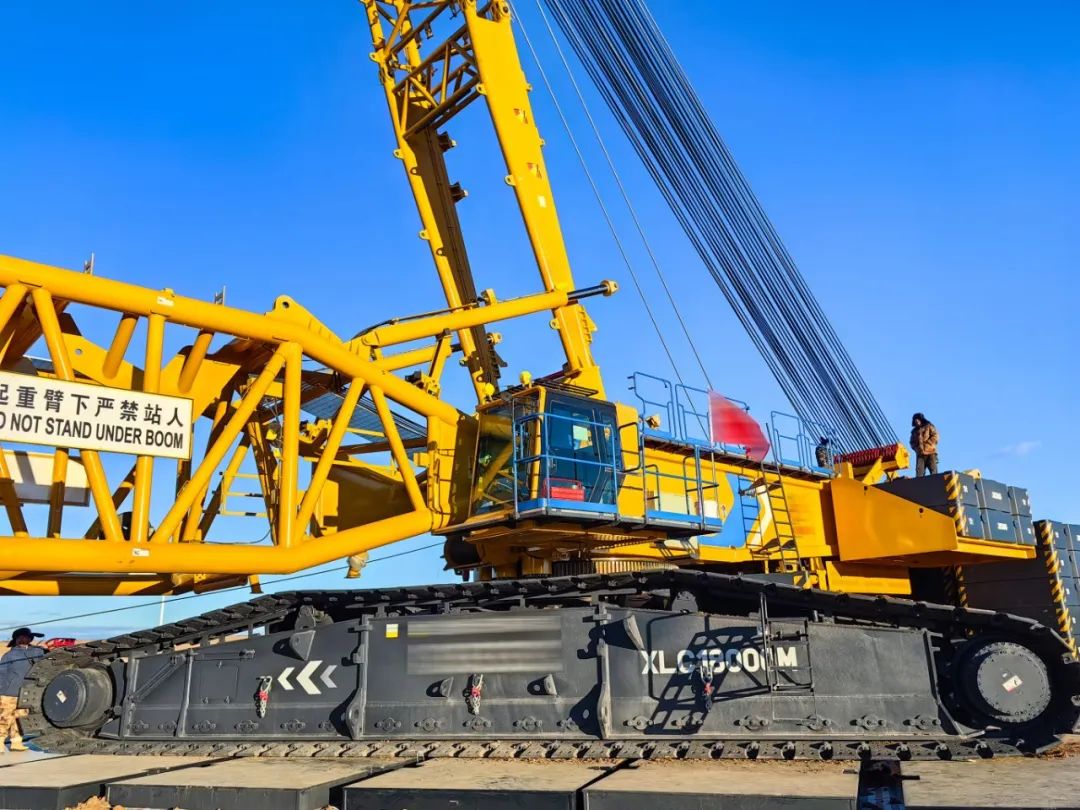04-13-2025, 01:43 PM
With the strong winds of April "raging in," the crane's "swaying show" might take place unintentionally! During this season of tumultuous weather, we must not only stay professionally vigilant but also approach challenges with a relaxed mindset. Here are some wind safety tips to ensure the safety of the equipment while keeping operations enjoyable, allowing you to stay steady even in strong winds!

Wind Speed Red Line: Strictly Follow 9.8m/s
Once the wind speed exceeds 9.8m/s (level 5 wind), never "force" operations. Make it a habit to check weather forecasts in advance every day. Once the wind hits, switch to the "strong wind rest mode" immediately, allowing the crane to rest and "lie down."
Heavy Loads and Height: Big Loads Catch More Wind
The larger the lifted object and the higher the lifting height, the larger the wind-facing area and the higher the center of gravity, which significantly reduces stability. It's recommended to first conduct a small-scale test lift to observe the "swaying show" of the equipment in the wind. Once you're sure it's safe, proceed with the formal operation. Also, don't forget to add counterweights, dressing the crane in a sturdy "windproof armor."

Large Wind-Facing Objects: Dangerous Solo Dance in the Wind
Lifting wide steel plates or other large wind-facing objects is like letting a "big fan" dance alone in the air. When the wind hits, it may crash into the boom or cause violent swaying. Tie a "centering rope" to these objects to prevent them from "dancing" freely in the wind, ensuring the equipment remains as steady as a rock.
Empty Load Operation: Keep It Low-Key
If the crane maintains a large boom angle with no load, it’s easy for the wind-facing area to become too large, leading to tipping or accidents. Adjust the boom angle to minimize the wind-facing area, ensuring the crane stands as steady as Mount Tai.
When Wind Speed Exceeds 9.8m/s, Immediately Stop Operations and Follow These Steps:
When the main boom wind speed exceeds 17m/s, the heavy load must first be safely lowered. Then, adjust the boom to a safe angle and slowly operate the turntable to avoid violent impacts or damage to the equipment caused by excessive wind force.

Preemptive Measures: Defenses Before the Wind Hits
If the predicted main boom wind speed exceeds 21m/s or the auxiliary boom wind speed exceeds 15m/s, develop a detailed windproof lowering plan in advance. Lock the lifting arm and secure the cab door while taking necessary precautions for the operator's cabin glass to create a comprehensive protection loop.
Stay Away from High-Voltage Lines, Never Play "Close Contact"
During high-wind operations, no matter the condition of the equipment, always stay away from transformers, power poles, and other high-voltage lines. High-voltage wires sway in the wind, and if they fall, they can easily cause electric shocks and fire accidents. If you accidentally come into contact with electricity, quickly move away with your feet together, and never try to be brave.
Wind Speed Red Line: Strictly Follow 9.8m/s
Once the wind speed exceeds 9.8m/s (level 5 wind), never "force" operations. Make it a habit to check weather forecasts in advance every day. Once the wind hits, switch to the "strong wind rest mode" immediately, allowing the crane to rest and "lie down."
Heavy Loads and Height: Big Loads Catch More Wind
The larger the lifted object and the higher the lifting height, the larger the wind-facing area and the higher the center of gravity, which significantly reduces stability. It's recommended to first conduct a small-scale test lift to observe the "swaying show" of the equipment in the wind. Once you're sure it's safe, proceed with the formal operation. Also, don't forget to add counterweights, dressing the crane in a sturdy "windproof armor."
Large Wind-Facing Objects: Dangerous Solo Dance in the Wind
Lifting wide steel plates or other large wind-facing objects is like letting a "big fan" dance alone in the air. When the wind hits, it may crash into the boom or cause violent swaying. Tie a "centering rope" to these objects to prevent them from "dancing" freely in the wind, ensuring the equipment remains as steady as a rock.
Empty Load Operation: Keep It Low-Key
If the crane maintains a large boom angle with no load, it’s easy for the wind-facing area to become too large, leading to tipping or accidents. Adjust the boom angle to minimize the wind-facing area, ensuring the crane stands as steady as Mount Tai.
When Wind Speed Exceeds 9.8m/s, Immediately Stop Operations and Follow These Steps:
- Steadily lower the lifted object to the ground and release the hook to eliminate potential hazards.
- Secure the hook to a counterweight block weighing around 20 tons to prevent the hook from swaying in the wind.
- Adjust the boom angle: For main boom conditions, the boom angle should be changed to 60°~70°; for tower-type conditions, the main boom angle should be 75°, and the tower arm angle should be about 35°.
- Rotate the turntable so that the back of the boom faces the wind, positioning the crane to "stand with its back to the wind," reducing the impact of the wind.
- Close all brakes and ratchet devices, and lock the turntable with the turntable locking pin.
When the main boom wind speed exceeds 17m/s, the heavy load must first be safely lowered. Then, adjust the boom to a safe angle and slowly operate the turntable to avoid violent impacts or damage to the equipment caused by excessive wind force.
Preemptive Measures: Defenses Before the Wind Hits
If the predicted main boom wind speed exceeds 21m/s or the auxiliary boom wind speed exceeds 15m/s, develop a detailed windproof lowering plan in advance. Lock the lifting arm and secure the cab door while taking necessary precautions for the operator's cabin glass to create a comprehensive protection loop.
Stay Away from High-Voltage Lines, Never Play "Close Contact"
During high-wind operations, no matter the condition of the equipment, always stay away from transformers, power poles, and other high-voltage lines. High-voltage wires sway in the wind, and if they fall, they can easily cause electric shocks and fire accidents. If you accidentally come into contact with electricity, quickly move away with your feet together, and never try to be brave.



